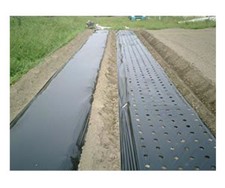What is System Integration Testing SIT Example
- pragati
- March 24, 2022
- Software development
- 0 Comments
Agile is when software development happens in multiple iterations, and at the end of every iteration, a usable product is developed. Thus, for agile – the system integration testing will have to be executed at the end of every such iteration. System Integration Testing is a sort of software testing that is performed
in an integrated hardware and software environment to evaluate the overall system behavior. It is testing performed on a whole, integrated system to determine the system’s compliance with the stated requirements.

SIT is basically a systematic technique that helps construct the app structure while managing the tests for outlining the errors linked with interfacing. The https://www.globalcloudteam.com/ modules are connected in advance, and the entire app is tested at one time. However, during this testing process, possible errors might be encountered.
Hardware Software Integration Testing
Since knowing who is responsible for system integration testing is important, it is worth considering the testing practices that change with time. Organizations rely more on quality engineering than quality assurance; the entire team plays a vital role in software quality. It becomes a collective effort so that you deliver exceptional outcomes to the customers in the long run.

Since it takes a while to unit-test the entire system, it’s common for tech project managers to skip the stage altogether. Unit testing does not require any specialized skills or well-trained workforce. Although there’s been much backlash regarding the high cost and inefficiency of unit tests, the approach has its own advantages. definition of system integration testing This open-source automation testing tool is designed for web-based application testing. Although specifically designed for Angular and AngularJS applications, its use case isn’t limited to those applications. Protractor enjoys support in many different browsers, including Chrome, Firefox, Internet Explorer, and Safari.
What is System Integration Testing?
This approach begins by testing the lowest level components, then moves up through each component until the entire system has been tested. This approach can help to identify any errors within individual components before they affect other parts of the system. It can be challenging to analyze the root cause with this approach when all the systems are closely integrated. This approach is useful when you are required to perform one round of system integration testing. This approach helps eliminate the limitations and challenges encountered in the top-down approach.
You cannot rely on traditional working methods, where it takes a lot of time to release the final product in the market. With LambdaTest’s continuous quality cloud, you can test and ship your software products at a lighter pace. It offers manual and automated testing across 3000+ real browsers, devices, and operating systems combinations. So far, we have discussed different concepts that make system integration testing an essential part of any testing ecosystem.
Introduction to System Integration Testing (SIT)
Therefore, SIT is necessary to identify and resolve any issues before delivering the system to the user. System testing is imperative for interconnected systems because any system or software defect can cause extreme complications for the consumers. For example, in 2014, Nissan had to recall over 1 million cars due to a defect in the airbag sensor detectors. The Caltech Coding Bootcamp, ranked the Number One coding bootcamp by Career Karma, can turn you into a full-stack developer in six months! The bootcamp helps you master both front-end and back-end Java technologies, beginning with the basics and escalating to the advanced aspects of full-stack web development. In addition, you will learn Angular, Spring Boot, web services, JSPs, and MongoDB, valuable tools needed to launch your career as a full-stack developer.
It’s needless to say that fixing these errors is challenging because isolation makes it complicated since the program is widely expanded. With system testing, a QA team gauges if an application meets all of its technical, business and functional requirements. Although these two approaches are complementary, it’s important to understand the difference between unit testing vs integration testing. In this post, you’ll find out what the objectives of both testing types are, their respective advantages, as well as unit test vs integration test example.
Software Development Methodologies: Everything You Need to Know
SIT is necessary to highlight the errors that arise when the integrated
subsystems interact. If you are a growing startup looking to redefine or reinvent your testing requirements related to system integration, you should try the LambdaTest platform. To overcome this limitation, we have modified sandwich testing so that you can test the top, middle, and bottom layers in parallel using stubs and drivers. In this approach, it is difficult to know the root cause of the failure because of integrating everything at once. The second approach is workable but can lead to significant overhead, as stubs become increasingly complex.

Once users download the applications, they see a sign-up form where they can enter their account information. After successful authorization, they are redirected to a page listing different subscription plans. The whole system is tested after integration, and this process is known as System Integration Testing. Here, the new and the old system are integrated to know whether it is working as per the expectations or not.
Digital Experience Testing
The system contains numerous components that can be unit tested independently. As a result, system integration testing helps you to expose and correct errors before the system is handed over to the end users. In technology product development, the beginning of system integration testing is often the first time that an entire system has been assembled such that it can be tested as a whole. As we can see in the below image, we will perform the functional testing for all the text fields and every feature.
- Testing in the production environment itself can create numerous problems.
- The major differences between them lie in the specific situations and scenarios that they are used.
- The rationale for this approach is that the entire system can only work reliably if these basic building blocks work reliably.
- First, data exchange (data import and export) occurs across system components, followed by an examination of the behavior of each data field inside the particular layer.
- To summarize, software integration testing is defined by software testing, while HSIT is all about testing the software and hardware at once.
Almost all the units or central units are combined to perform integration testing in one attempt, mostly when teams have entire software in their bundle. Automating system integration tests help reduce manual effort and speed up the testing process by running multiple tests at once. It also makes it easier to identify potential issues quickly and accurately since results can be compared against expected outcomes more easily with automation tools. System Integration Testing, or SIT, is a QA process that is leveraged to ensure the compatibility of two or more systems. It helps to ensure that the systems are working together correctly and that any interactions are appropriate and safe.
Integration Testing Best Practices
Unit tests improve code reusability since the reused units are well-tested. If the development team misses out on unit testing, the odds of reusing buggy code and spawning numerous system failures in the future increase dramatically. It helps teams pinpoint weak spots and system defects at the early stages of development and promotes more confidence in the product. Furthermore, the use of these two valuable tests is crucial in every software development in order to create a product that answers the user’s needs and meets the business requirements.




